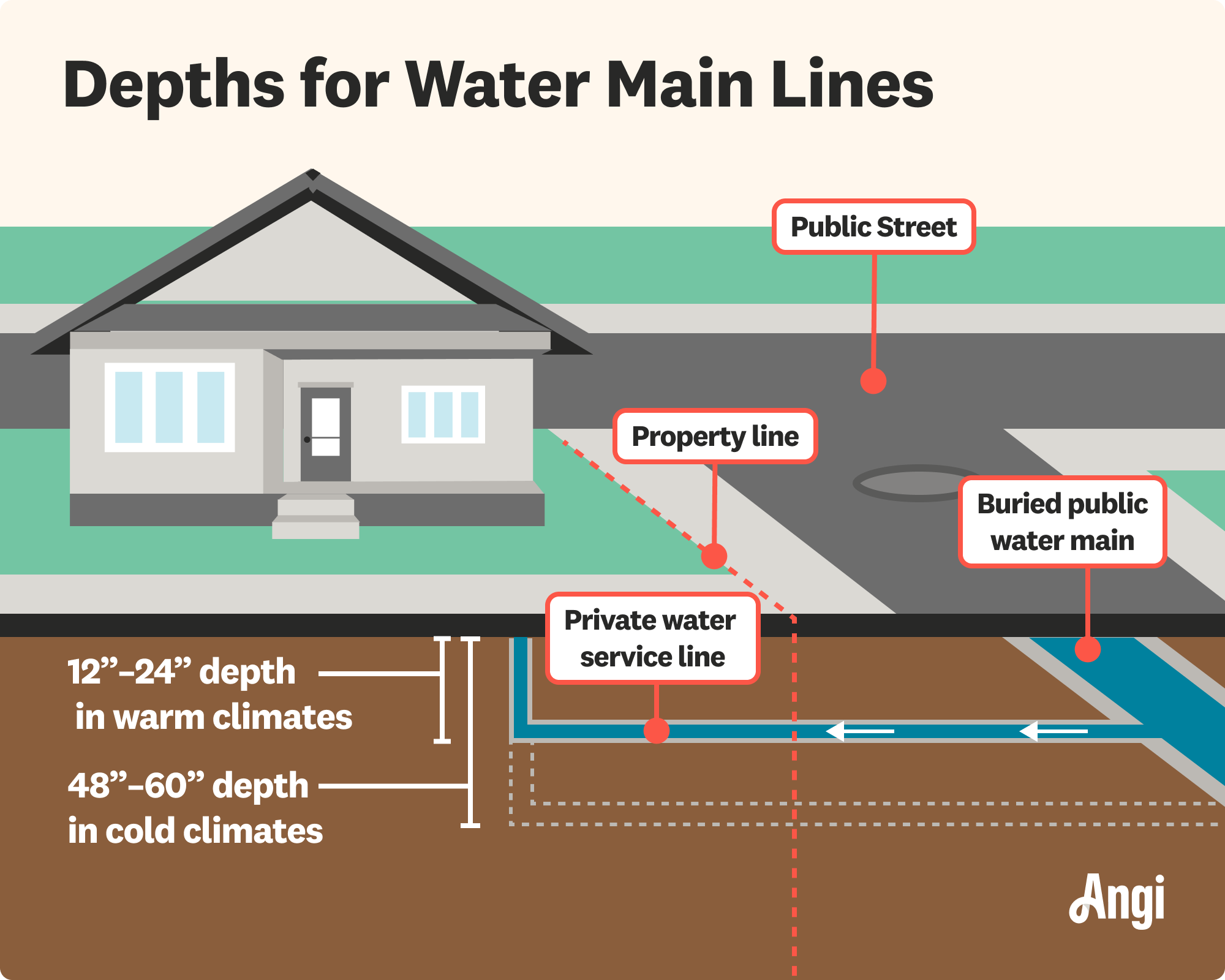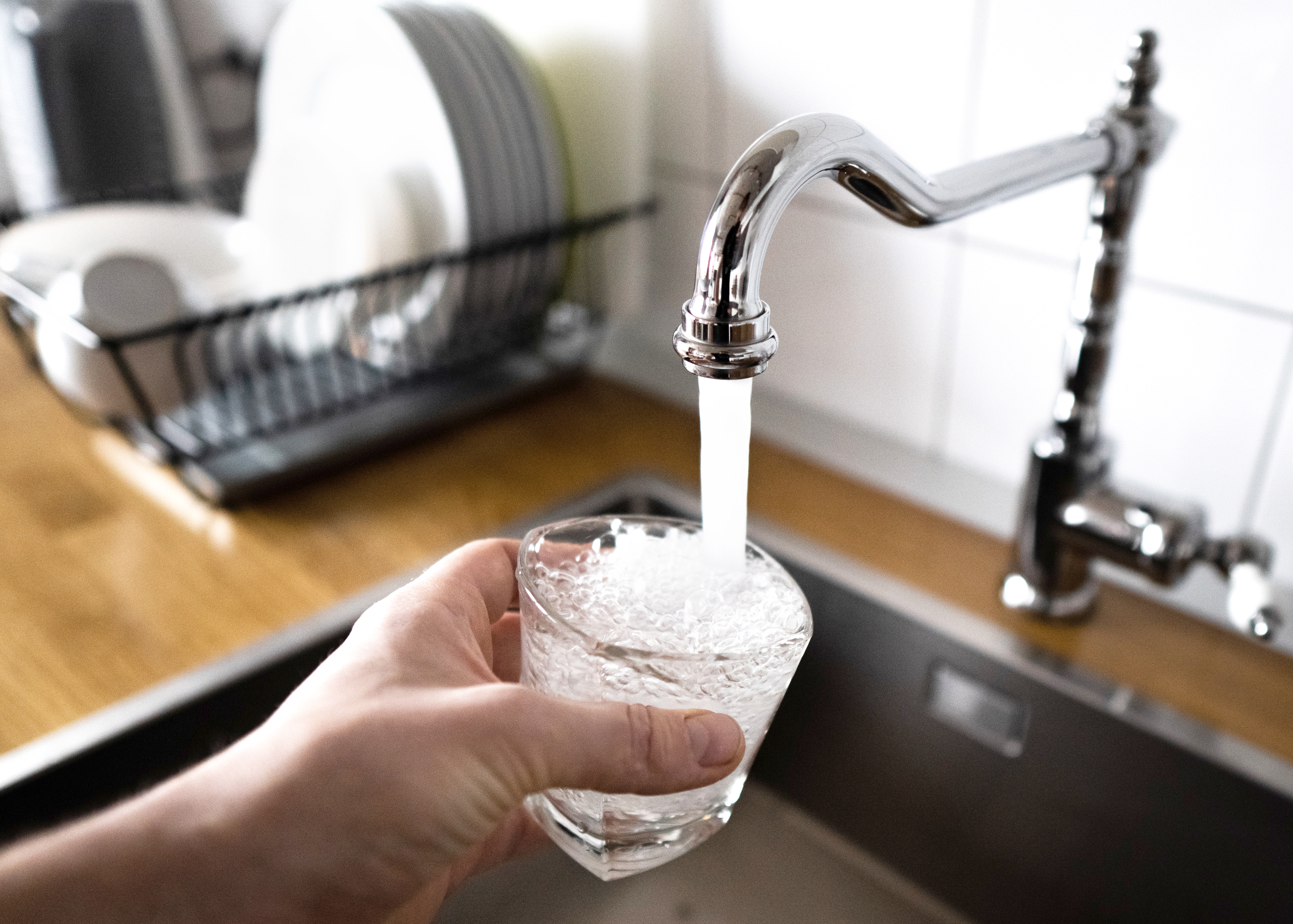
The cost to cap a gas line is relatively low, as plumbers can handle the job in roughly an hour. We break down cost factors and DIY considerations.
Main water line replacement in Orlando costs $480 on average, with most homeowners spending between $254 and $757. Sandy soil, high groundwater, and tree root intrusion can impact your total cost.


Orlando’s sandy soils and high groundwater table can complicate water line replacement projects.
Permitting requirements and inspections add time to the replacement process.
Trenchless replacement helps preserve landscaping and minimize disruption.
HDPE and copper piping provide long-term durability in Florida’s climate.
While most homeowners spend around $480 on main water line replacement costs in Orlando, prices can range from $254 to $757 depending on project complexity and material choices. For comparison, the national average cost of main water line replacement falls around $1,700, depending on region, method, and materials used. The average cost of main water line repair in Orlando is $320. Learn about the factors that will raise or lower your actual price.
Orlando’s unique combination of sandy soil, high groundwater, and year-round growing season makes main water line replacement more complex than in some other U.S. cities. Orlando's unique conditions—including sandy soil, high groundwater table, and aggressive tree root systems—can complicate replacements and influence pricing. Licensed plumbers also factor in local building codes, permit requirements, and site accessibility when providing estimates.
The method used to install your new main water line—traditional trenching versus trenchless installation—can significantly impact overall cost and disruption. Traditional trenching costs between $400 and $1,500, depending on the length and site conditions. It involves digging a full-length trench across your yard or driveway, which can increase landscaping restoration costs.
Trenchless techniques, such as pipe bursting or horizontal boring, cost between $900 and $2,300 in the Orlando area. However, preserving landscaping, hardscaping, and mature trees can save money on post-project repairs. In neighborhoods with established landscapes and driveways, trenchless replacement may be the best choice despite its higher upfront cost.

The further your water line runs from the city main to your home—and the deeper it needs to be buried—the more you’ll pay for materials and labor. In Orlando, pipe depths generally range from 18 to 30 inches to protect against soil shifts and root intrusion.
| Pipe Length (Feet) | Estimated Cost Range |
|---|---|
| 30 feet | $254–$600 |
| 45 feet | $380–$900 |
| 60 feet | $500–$1,200 |
Choosing the right pipe material for a main water line replacement in Orlando depends on a combination of factors: local building codes, soil and climate conditions, expected lifespan, and project budget. In Central Florida, the high groundwater table and sandy soils place extra stress on pipes. Additionally, Orlando’s hot, humid climate means the optimal materials will resist corrosion and handle temperature fluctuations.
HDPE (high-density polyethylene) is widely used in Orlando for trenchless applications because of its flexibility and durability underground. Copper remains a preferred option for homeowners seeking maximum longevity and those undertaking traditional open-trench replacements, although it comes with higher material and labor costs.
PEX and PVC can also be viable choices. However, they may not be allowed below-ground in all situations or may degrade more quickly in Orlando’s wet, warm environment. It’s best to consult an Orlando-licensed plumber to select the material best suited for your property.
| Material | Cost per Foot | Pros | Cons |
|---|---|---|---|
| PEX | $0.50–$1.50 | Flexible, easy install, corrosion resistant | Not always code-compliant underground |
| PVC (Schedule 40) | $0.75–$3.00 | Affordable, lightweight | Brittle in heat, possible cracking |
| Copper (Type L) | $2.50–$5.00 | Durable, approved by local code | Expensive, labor-intensive |
| HDPE | $1.25–$4.00 | Best for trenchless, long-lasting | Requires specialized installation |
Orlando’s high water table and sandy soils often require additional site prep. Soil collapse and trench flooding can increase labor time and costs. Properties with large tree roots, common in older Orlando neighborhoods, may also need additional root cutting.
Hardscaping, fences, patios, and large trees can raise your replacement costs by making excavation more complicated. If your line runs under concrete driveways or large landscape features, trenchless water line replacement can help reduce disruption and cost.
In Orlando, residential main water line replacements typically fall under the city's plumbing permit category. According to the City of Orlando’s fee schedule, a plumbing permit is charged at $75 for the first $1,000 of project value, with an additional $3 per each additional $1,000 of valuation. Orange County permits list a minimum $100 fee for plumbing permits, or half the valuation fee—whichever is greater.
Re-inspection fees run around $150 if follow-up visits are required, and inspection cancellations within 24 hours carry a $50 fee. Performing work without a permit can result in double the fees or a minimum penalty of $103. Altogether, homeowners in Orlando should budget $75 to more than $150 for permitting and inspections when planning a main water line replacement.
Licensed plumbers cost about $45 to $200 per hour in Orlando. Rates may climb during peak demand periods—such as after hurricanes or major storms—when plumbing services are in high demand. Be sure to ask your Orlando plumber for a clear, upfront cost estimate.
While replacing a main water line won’t directly increase resale value, as a kitchen remodel might, it does boost your home’s marketability. A new water line may be attractive to potential buyers because it:
Prevents future leaks and water damage
Improves water pressure
Lowers long-term maintenance costs
Can avoid issues on home inspection reports
Home is the most important place on earth, which is why Angi has helped more than 150 million homeowners transform their houses into homes they adore. To help homeowners with their next project, Angi provides readers with the most accurate cost data and upholds strict editorial standards. We survey real Angi customers about their project costs to develop the pricing data you see, so you can make the best decisions for you and your home. We pair this data with research from reputable sources, including the U.S. Bureau of Labor Statistics, academic journals, market studies, and interviews with industry experts—all to ensure our prices reflect real-world projects.
Want to help us improve our cost data? Send us a recent project quote to [email protected]. Quotes and personal information will not be shared publicly.
From average costs to expert advice, get all the answers you need to get your job done.

The cost to cap a gas line is relatively low, as plumbers can handle the job in roughly an hour. We break down cost factors and DIY considerations.

Learn about main water line repair costs in Columbus and what affects pricing to be prepared before you start getting estimates.

Learn how much plumbers cost in Columbus, Ohio. Discover pricing for faucet repairs, pipe work, and emergency services, plus how you can save money.

Fixing a leaky faucet starts with knowing which type of faucet you have. Follow these steps to learn how to fix a leaky faucet in no time.

Copper is prone to leaks from corrosion, particularly pinhole leaks. This guide will show you how to fix a copper pipe leak in seven different ways.

Clogs can keep drains backed up and build up odors in kitchens and bathrooms. Learn how to use a plumbing snake, a simple solution to clearing clogs.